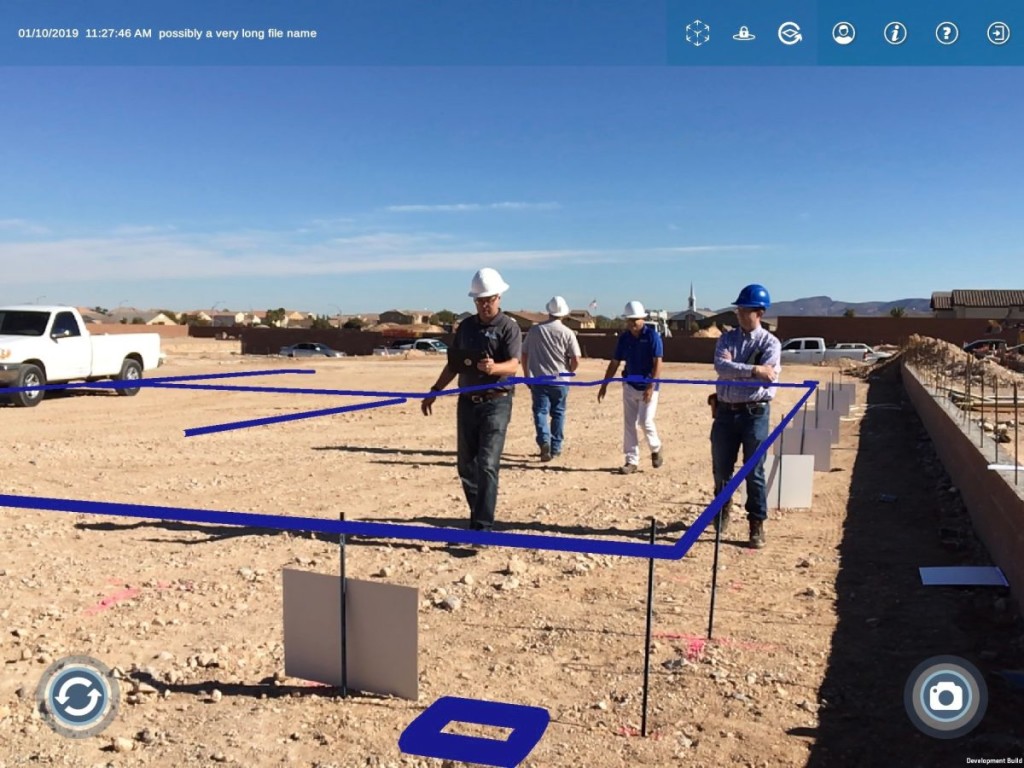San Diego, 10.07.2019. Esri UC
Of course, the GIS world couldn’t be immune to the whole AR/VR hype.
On the BIM side of things we’ve heard a lot about taking your models and throwing them into a Game Engine to provide an immersive experience, and by now you should know how I feel about this (if not, this is the hashtag: we’ve explored the subject on multiple occasions along with my friend and colleague Gabriele Gallo).
It’s always interesting to see if a similar industry such as GIS has the same issues and what approach they are using, so I booked a couple of classes on the topic, here at the Esri User Conference in San Diego, and here are my thoughts.
Special Interest Group on Tuesday
They have this thing, around here, a format I wasn’t familiar with from my experiences with other conferences such as AU and BILT. The Special Interest Group, SIG for short, is basically a panel with very short demonstrations and talks delivered by Industry Stakeholders. It can become very commercial, but it can also be very interesting. Here’s what was shown on Tuesday in the Special Interest Group on Virtual and Augmented Reality.
1.1. Argis
They are a Company based in Denver and they showcased a success story about their collaboration with Silver Lake Construction, one of Nevada’s leading concrete contractors, based in Vegas.
The client requested an Augmented Reality solution, but what I liked a lot about this talk was how they framed the issue, in two neats little steps:
- Statement of the Problem: building foundations profitability requires coordination.
- Requirements: the solution needed to be mobile, it required a sub-6-inches accuracy, it had to be usable on-site by workers.
The solution itself worked on DWG files, superimposing polylines on the terrain, and as such was of no particular interest to me, but still it’s a good example on how you should always start from a clear understanding of the problem and a deep knowledge of the people you are going to work with, before coming up with a solution.
1.2. GeoDecisions
The Company, based in Pennsylvania, showcased a solution developed for Quanah Parker Dam, with the aim to streamline bridge and dam inspection with reality capture and machine learning.
It was a very untechnical talk, but some useful information came out from Q&A, such as the fact that the development of the model was done through a combination of a Revit model and a hydraulic model on the Esri platform, before throwing everything into Unity to achieve VR.
1.3. Trimble
Then, along came Trimble to showcase a new hardware solution for augmented reality, Trimble SiteVision, that frankly reminds me a lot of the deceased Google Project Tango.
What was particularly interesting of the way they framed the issue was that they bothered to take a step back and ask themselves why using VR or AR at all.
«Because we aren’t all wired the same way.»
True indeed.
They showed some assessment questions on the technology, again proving that knowing your people is indeed the most important thing when trying to innovate. These questions were:
- What is the primary application for this technology?
- Will the accuracy meet expectations?
- What battery life is acceptable?
- How rugged, weatherproof does it need to be?
- Is the display readability adequately usable?
- What are the barriers to broad outdoor use?
- What are the issues and preconceptions of consumer phones?
- Who are the target users in the organization?
- Who will prepare the data?
- Feedback on value: what are the savings/benefits?
- How well can you interpret 3d objects in Augmented Reality?
- What are the biggest impacts on usability in the field?
If we bothered to develop these kinds of questions upon proposing any innovation, things would go much smoother.
1.4. vGIS
The Company is an official partner with Microsoft for what they call Mixed Reality and they have two divisions: what they call Utilities and what they call Exploration (mostly for oil and gas).
Their products are multi-platform and their workflow is interesting, as they code their way from the Esri platform to Microsoft Azure and then into the device.
They have a nice experimental data collection system in AR, currently in beta, which again reminds me a lot of some of the potential I saw in Project Tango.
They of course also provide what they define a way to assess surroundings: your “regular maquette on the table” version of AR.
What I liked about this talk was how they encapsulated specifications for AR in terms of:
- Visuals:
- They need to be descriptive;
- They need to be practical, for instance by filtering the many assets you can bring in from a model;
- They need to be appealing (although we have two very different ideas of what is appealing, buddy)
- You need to be able to give different types of views (for instance, to correct the parallax effect or not) in order to accommodate different tastes and ocular sensibilities.
- Positioning:
- You might use GNSS/RTK, or…
- …you might need a less costly solution where GNSS is not an option;
- And you might also have to take into consideration the positioning of your AR model for indoor or underground/tunnelling.
- Visual accuracy:
- elevation is one of the main issues, as models often just have project zero;
- they developed something called environmental understanding, to help when you can’t work with absolute coordinates but you are dealing with contextual elevations;
- you need to provide a dynamical understanding of slopes and projections.
- Collaboration is of course crucial.
- On the Back-end, you need to take into consideration:
- data handling;
- Integration of the system into the Company’s existing data architecture.
Some interesting development was also showcased this morning by the same City of Pasadena I praised yesterday, involving the Unreal Engine, but I’ll talk about it on another posto around BIM and GIS integration.
Today afternoon I have a couple of more talks on the topic:
- an introduction around VR and AR in ArcGIS (an Esri demo, really);
- a talk on GIS and Augmented Reality in the Spotlight Theater of the Startup Zone.
I’ll let you know if something interesting pops up.













No Comments